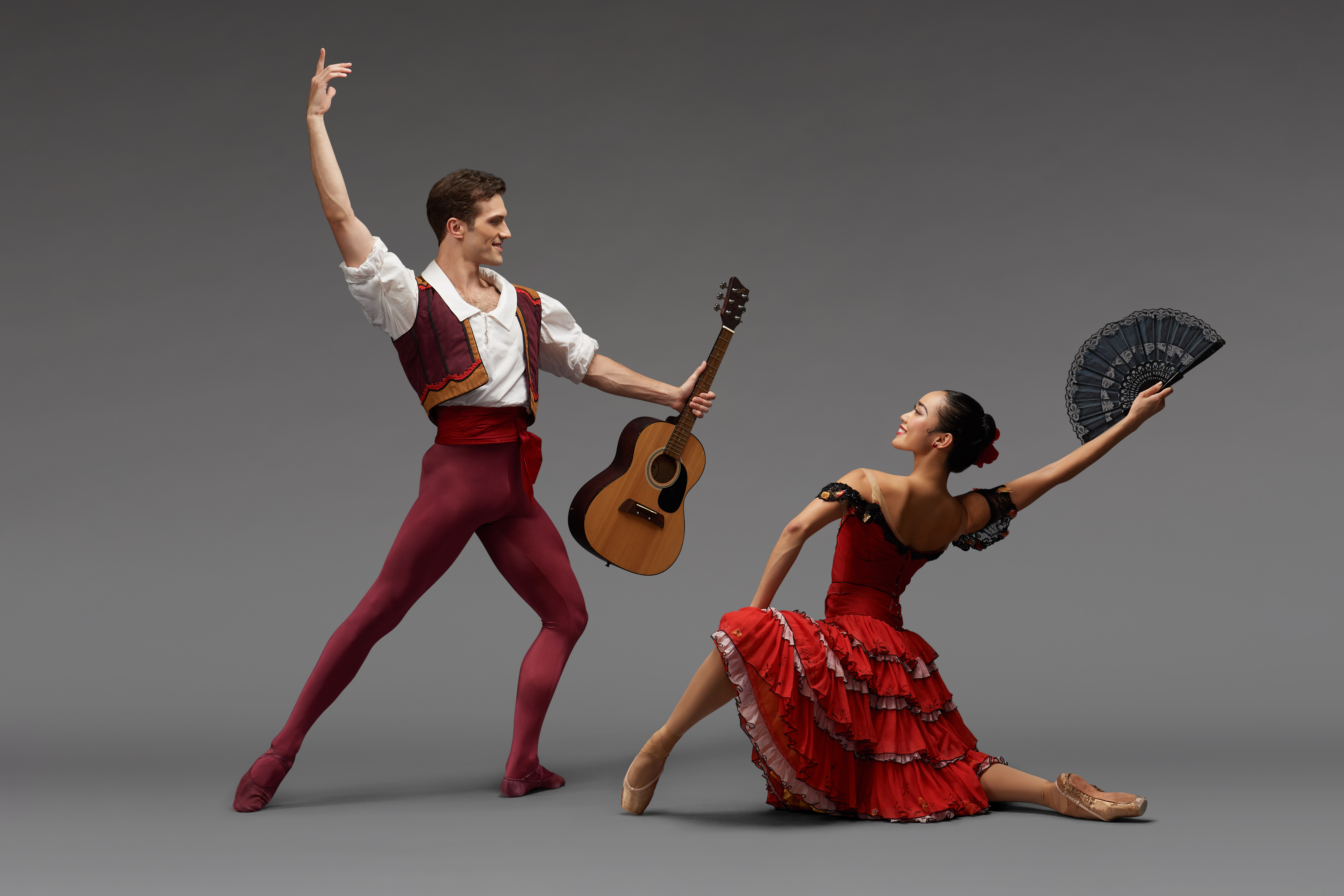This story was originally published by ArtsATL.
What is Don Quixote’s impossible dream? Miguel de Cervantes, author of the eponymous novel, wrote that the old man’s quest as errant knight was, in a nutshell, to bring justice, truth and beauty to a world given to cynicism and materialism.
At first glance, much of Cervantes’ philosophy seems lost in Yuri Possokhov’s ballet adaptation of “Don Quixote,” which Atlanta Ballet presented last weekend at the Cobb Energy Performing Arts Centre. But the highly entertaining production showed that the vision to install Russian classicism at the core of a once contemporary-leaning ballet company is clearer and more appealing than ever.
Jonathan McPhee conducted the Atlanta Ballet Orchestra in Ludwig Minkus’ score, composed for Marius Petipa’s 1869 ballet. This arguably dated accompaniment, and a vocabulary that’s steadfastly loyal to 19th century classicism, brought Friday’s opening night performance dangerously close to being as much of an anachronism as its eccentric leading man.
Yet dancers and orchestra pulled together Sunday afternoon to create what felt like a jolt of energy into the classical form.
The brisk two-hour jaunt builds on Russian versions that are based on Petipa’s and Alexander Gorsky’s works, adding evocative image projections to lavish costumes and scenery. These provided a backdrop for vivid characters, cheeky humor and a copious supply of bravura, Spanish-flavored classical dancing performed by a cast of dancers in command of their technique and at ease enough to enjoy it.
Drawn from an episode in Part II of Cervantes’ novel, the story brings Don Quixote and his squire Sancho Panza into a village where an arranged marriage between the vivacious young Kitri and the foppishly prissy (but rich) Gamache is about to take place. But Kitri is in love with the poor but talented barber Basilio, and the two must convince Kitri’s father to call off the marriage and bless their love match instead.
Possokhov paints the Don’s character, performed by Benjamin Kuefler, in broad strokes. The old man was often seen journeying across the stage, pausing mid stride, hands over heart, and then reaching forward toward some distant destination. Sancho Panza (a hilarious Dylan Clinard) was his hip swiveling, belly-shaking squire. The decrepit horse Rocinante, a puppet manned by two Atlanta Ballet students, witnessed the village goings-on, his head turning aside to the audience as if to comment on the action when it became really absurd.
Comedy provided contrast for seriously impressive dancing.
As Kitri and the vision scene’s Dulcinea, Airi Igarashi proved herself a true virtuoso. Partnered both Friday and Sunday by Patric Palkens as Basilio, Igarashi seemed to stretch her heart through every body line as she tackled some of the canon’s most difficult partnering sequences with fiery clarity.
At first moving slowly, building tension, the couple sprang into devilishly fast footwork, Igarashi spinning and plunging into daring dips. She cut split-leaps across the space with clean authority, then popped into saucy attitudes, kicking her ruffled skirt behind her.
Palkens’ pyrotechnics combined athleticism with a comedic sensibility. Shortly after his fake death scene, he launched into a series of buoyant turning leaps, only to partner Igarashi in the final grand pas with deft precision and romantic flair.
As Mercedes and Espada, the “it” couple of the bullring, Emily Carrico and Eric Kim shared a steamy onstage chemistry, their connection visceral and magnetic. You could feel the heat between them as she spun under his arm and stopped on a dime, her black and magenta skirt awhirl. Carrico, whose every glance was arresting, captured the soul of flamenco, arching her back almost to the floor, arms undulating like a ring of fire around her.
As Cupid, Hui Wen Peng appeared so light it seemed she could levitate without a wire to assist her. Fresh, with generous warmth in her smile, Peng moved with natural radiance, smooth control and veiled humor, especially when she capped a phrase of dainty hops en pointe with a rise and spread of her arms that almost felt like a punchline.
Jessica He and Fuki Takahashi, as Kitri’s friends, embodied the musicality and perfect unison work so vital to the style’s success.
Wendall K. Harrington’s projected designs added nuance, particularly the evocative images inspired by Gustave Doré's illustrations of Cervantes’ novel. They showed the Don wandering across the countryside, then convalescing after his fight with imagined monsters and dragons (windmills). An exhausted, but happy man, this walking anachronism became a community’s accidental hero.
Altogether, the bravura dancing, roiling comedy and exquisite production values shaped Possokhov’s “Don Quixote” into a delightfully escapist couple of hours. But it raised a question: Why produce a ballet so anchored in bygone days? When and how does anachronism gain relevance and meaning?
The answer could be in what “Don Quixote” represents -- a vision to bring love, honor and integrity to a world that has lost its ethical center.
Classical ballet is an ideal form that few people pursue and fewer succeed in mastering. With this production, Atlanta Ballet has shown it is realizing that vision of beauty more fully at every turn, and that is perhaps the quixotic dream.
::
Cynthia Bond Perry has covered dance for ArtsATL since the website was founded in 2009. One of the most respected dance writers in the Southeast, she also contributes to Dance Magazine, Dance International and The Atlanta Journal-Constitution. She has an M.F.A. in narrative media writing from the University of Georgia.
MEET OUR PARTNER
ArtsATL (www.artsatl.org), is a nonprofit organization that plays a critical role in educating and informing audiences about metro Atlanta’s arts and culture. Founded in 2009, ArtsATL’s goal is to help build a sustainable arts community contributing to the economic and cultural health of the city.
If you have any questions about this partnership or others, please contact Senior Manager of Partnerships Nicole Williams at nicole.williams@ajc.com.
Keep Reading
The Latest
Featured


